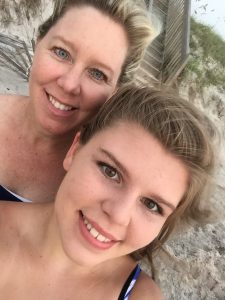Dec 21 2017
Amy Cecchini
When I decided to return to school, again, my goal was to position myself to be able to teach in a DPT program. Funny that 20 years ago I went back to school, to UNC, for the same reason. At that time, PT programs were MPT programs and I graduated with a BS which was the standard at the time I was in PT school. In the interim, programs advanced further to the DPT and I “only” had an advanced Masters in HMSC. I still had a dream and a desire to teach though, so off I went and enrolled in the tDPT program. My main goal was to achieve the necessary degree, in the shortest time possible, to apply for a teaching position. Methodist University and Campbell University, both near me in Fayetteville, were developing new DPT programs, so the timing was excellent. Just before starting the program and throughout the two years, I moved from working clinically to working in research and really developed both a liking and an aptitude for it. That experience helped tremendously with the workload of the curriculum, and the curriculum helped tremendously with my ability to contribute meaningfully to the development and implementation of clinically relevant PT research. Somewhere along the line, it seemed that my dream to teach would again be put on the backburner, while my interest in research seemed to grow.
As I consider the tDPT program, I realize just how much the education and preparedness of new graduate PTs has advanced and improved over the decades. It’s amazing how much better prepared today’s new graduates are, not so much in terms of the “nuts and bolts” of what a PT must know, but in terms of being able to critically analyze and appraise methods and apply the most relevant, expedient, and effective strategies to patient care to optimize outcomes and integrate clinical improvement into functionally meaningful improvement. And in looking back at my own history in the field, my own story, I am amazed at how it has unfolded.
I now work at Ft. Bragg, one of the largest military installations in the world. Many days, I wear a dog tag around my neck. It’s my grandfathers dog tag, from World War I, which was made into a beautiful necklace for my grandmother after he died. My grandfather was a medic in the Army, stationed in Germany. And now, through a serious of very fortunate events, I am teaching a class every month to primary care providers and combat medics across the post about concussion identification, primary care management and post acute rehabilitation. This opportunity came through my work in research on concussion in the military. So I feel like this long and convoluted road has led me exactly where I can contribute the most. Ultimately though, I do hope one day to have the opportunity to teach and mentor students in a PT or PTA program. Every time I have the opportunity to interact with PT students at every level of their education and in the clinic, I am excited for the profession. But I’m mostly excited for the people whose lives they will impact with their knowledge, ambition, skills, and compassion.
Visit my capstone page at: https://dptcapstone.web.unc.edu/category/current-students-spring-of-2017/transitional-students-current-students-spring-of-2017/cecchini-amy/
